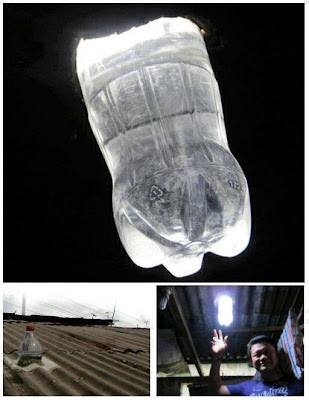We just tried to run a SI engine using 100% Bio-gas which was obtained from the Anaerobic digestion of cow dung.
Cow dung gas is 55-65% methane, 30-35% carbon dioxide, with some hydrogen, nitrogen and other traces. Its heating value is around 600 B.T.U per cubic foot. Natural gas consists of around 80 % methane, yielding a B.T.U value of about 1000.
Cow dung slurry is composed of 1.8-2.4% nitrogen (n2), 1.0-1.2% phosphorus (p2o5), 0.6-0.8% potassium (k2o) and 50-75% organic humus. About one cubic foot of gas may be generated from one pound of cow manure at around 28°c. This is enough gas to cook a day's meals for 4-6 people in India.
About 1.7 cubic metres of biogas equals one litre of gasoline. The manure produced by one cow in one year can be converted to methane which is the equivalent of over 200 litres of gasoline.
Gas engines require about 0.5 m3 of methane per horsepower per hour. Some care must be taken with the lubrication of engines using solely biogas due to the "dry" nature of the fuel and some residual hydrogen sulphide; otherwise these are a simple conversion of a gasoline engine.
The following samples are analysed through “Gas Chromatography Equipment” at CPCL Ltd, Pannankudi. Calorific value of the biogas using azolla is 55MJ/Kg
S.NO
|
AZOLLA
|
CACTUS
|
|
1
|
RAW MATERIAL INPUT
|
10KG.
|
10KG
|
2
|
GAS PRODUCED
|
0.25-0.4 KG
|
0.35-0.45 KG
|
3
|
CH4
|
68.21 %
|
57.33 %
|
4
|
CO2
|
1.98 %
|
14.88 %
|
5
|
OTHER GAS OR AIR
(CO,H,H2S,N2 ETC.,)
|
29.81 %
|
28.79 %
|
Let move to the DIY section,
Digester Construction :
A Cylindrical vessel of 75cm dia and 125cm height, having 3 layer, see the diagram.
AZOLLA:
In tamil nadu , the azolla is available at kanyakumari sea beaches.it is nothing but the green plant in which having the ability for doubling the bio mass.
Azolla floats on the surface of water by means of numerous Small, closely overlapping scale-like leaves, with their roots hanging in The water. They form a symbiotic relationship with the cyanobacterium Anabaena azollae, which fixes atmospheric nitrogen, giving the plant Access to the essential nutrient. This has led to the plant being dubbed A "super-plant", as it can readily colonise areas of freshwater, and Grow at great speed - doubling its biomass every two to three days.
CACTUS
In general, cactus having the nature of producing the carbon di oxide. It’s differ depends upon the temperature so in day time it is higher to compare at night time.
A cactus is a member of the plant family cactaceae, within the order caryophyllales. In the absence of leaves, enlarged stems carry out photosynthesis. Unlike many other succulents, the stem is the only part of most cacti where this vital process takes place.
Photograph of Digester and test setup:
METHANE COMBUSTION:
In the combustion of methane, several steps are
involved. An early intermediate is formaldehyde (HCHO or H2CO).
Oxidation of formaldehyde gives the formyl radical (hco), which then give
carbon monoxide (co):
CH4
+ O2 → CO
+ H2 + H2O
The
resulting h2 oxidizes to h2o, releasing heat. This
reaction occurs very quickly, usually in significantly less than a millisecond.
2
H2 + O2 → 2
H2o
Finally,
the co oxidizes, forming co2 and releasing more heat. This process
is generally slower than the other chemical steps, and typically requires a few
to several milliseconds to occur.
2
CO + O2 → 2
CO2
The
result of the above is the following total equation:
CH4
+ 2 O2 → CO2
+ 2 H2O
(δh
= −891 kj/mol (at standard
conditions))
Emission and Performance test results:
The usage of biogas as fuel is similar to the petrol but it is having the ability to minimize the NOX, CO content and also the specific fuel consumption.
The production of methane gas using cellulose material is better to compare with ordinary cow dung.
Using biogas as a fuel for producing power, the problem of electricity demand in our country can be resolved.
- This work was done by purushmech@india.com
Related Article :
Car run on human waste -AF -New technology

"The Bio-Bug" The Bio-Bug has been converted by a team of British engineers to be powered by biogas, which is produced from human waste at sewage works across the country. They believe the car is a viable alternative to electric vehicles. Excrement flushed down the lavatories of just 70 homes is enough to power the car...













